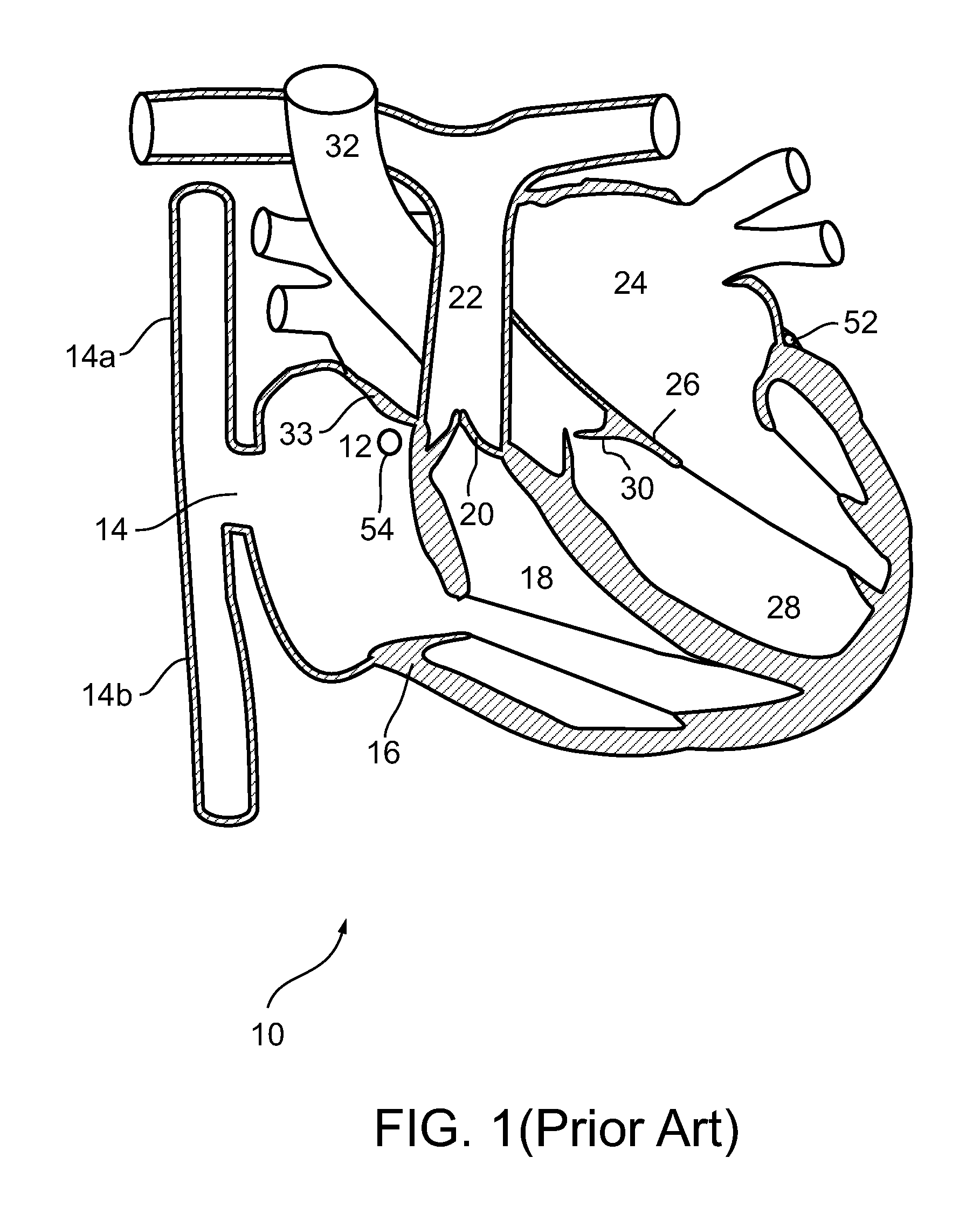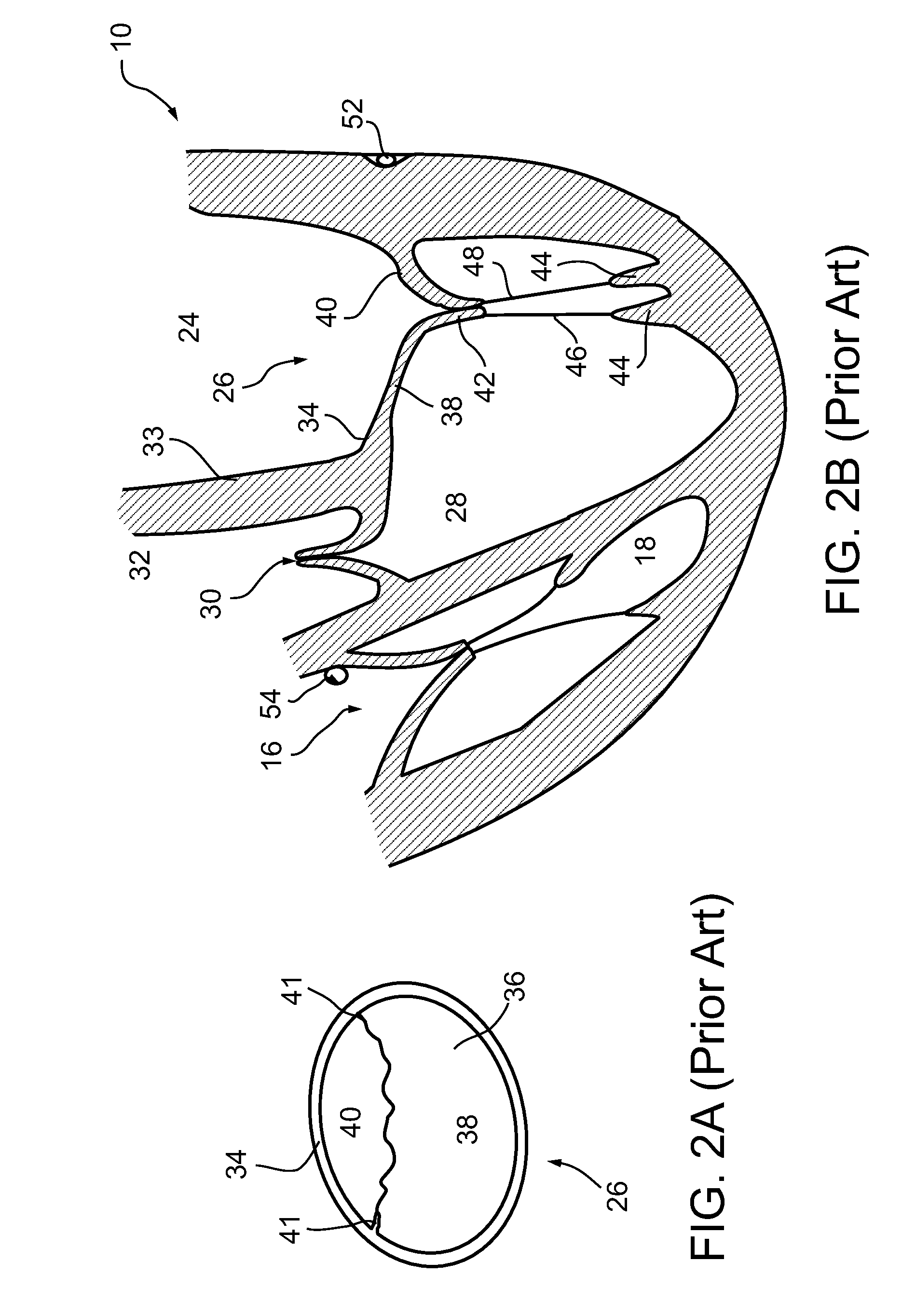Access to the left atrium and reduction of mitral valve leaflet mobility
a technology of left atrium and mitral valve, which is applied in the field of cardiology and cardiac surgery, can solve the problems of congestive heart failure, low cardiac output, shortness of breath, etc., and achieve the effects of reducing the mobility of one, and quick, simple and accura
- Summary
- Abstract
- Description
- Claims
- Application Information
AI Technical Summary
Benefits of technology
Problems solved by technology
Method used
Image
Examples
first embodiment
[0181]Reference is now additionally made to FIG. 5G, which is a schematic depiction of an optional configuration of the present invention relating to the minimally invasive conduit to the left atrium.
[0182]FIG. 5G depicts the elongated catheter body 72, the distal end 76, and the distal tip 78, depicts an angle 205 between the elongated catheter body 72 and the distal end 76. The angle 205 is used to negotiate the entrance to the coronary sinus, which is at an angle from the direction from which the elongated catheter body 72 typically enters the right atrium (12 of FIG. 1). The angle is optionally between about 70° and 110°.
[0183]While balloon 90 is in a first non-anchoring state, device 70 is mounted onto catheter-guiding guide wire 84 through catheter-guiding guide wire lumen 88 and directed in the usual way so that distal end 76 of elongated catheter body 72 is located inside coronary sinus 52 where side port 82 faces wall 98 of cardiac tissue separating coronary sinus 52 from l...
third embodiment
[0246]Reference is now additionally made to FIG. 9, which is a schematic depiction of the present invention relating to mitral valve leaflet augmentation.
[0247]As described above with reference to other embodiments, an elongated catheter body 72 enters the left atrium 24 through the coronary sinus 52. In the embodiment of FIG. 9, the elongated catheter body 72 is used to deploy an obstructor deployment catheter 268. The obstructor deployment catheter 268 deploys an expandable obstructor 270, in the anterior leaflet 38.
[0248]In the embodiment discussed above, guidance of leaflet-engaging components 104 and 106 is performed with the help of optical observation through optical fiber bundle 96 that passes through the body of the subject including past the femoral vein, the inferior vena cava, right atrium 12 and into left atrium 24 through a transseptal puncture. In some embodiments, an optical fiber or similar component is positioned to guide leaflet-engaging components through a diffe...
fourth embodiment
[0267]Reference is now additionally made to FIG. 10A, which is a schematic depiction of the present invention relating to a mitral valve obstruction device.
[0268]The mitral valve anti-regurgitation device 220 includes an obstruction 221 connected to an extension wire 222, which is further connected to an anchor 223.
[0269]The anti-regurgitation device 220 passes through a catheter 225, at the end of a wire 224.
[0270]Reference is now additionally made to FIG. 10B, which is a schematic depiction of the fourth embodiment of FIG. 10A, deployed in a heart.
[0271]The anchor 223 is depicted as having been attached to a wall of the left ventricle 28. By way of a non-limiting example, the anchor 223 is optionally a sharp wire with a shape of a corkscrew, suitable for anchoring in the wall of the left ventricle. By way of another non-limiting example, the anchor 223 is optionally a staple, suitable for anchoring in the wall of the left ventricle.
[0272]The obstruction 221 of the anti-regurgitati...
PUM
 Login to View More
Login to View More Abstract
Description
Claims
Application Information
 Login to View More
Login to View More - R&D
- Intellectual Property
- Life Sciences
- Materials
- Tech Scout
- Unparalleled Data Quality
- Higher Quality Content
- 60% Fewer Hallucinations
Browse by: Latest US Patents, China's latest patents, Technical Efficacy Thesaurus, Application Domain, Technology Topic, Popular Technical Reports.
© 2025 PatSnap. All rights reserved.Legal|Privacy policy|Modern Slavery Act Transparency Statement|Sitemap|About US| Contact US: help@patsnap.com



